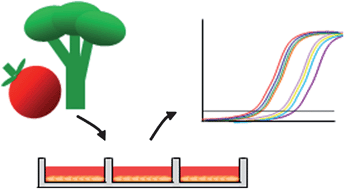Normalization genes for quantitative RT-PCR in differentiated Caco-2 cells used for food exposure studies
Abstract
Exposure of

* Corresponding authors
a
Wageningen University and Research centre, Food & Biobased Research, P.O. Box 17, Wageningen, The Netherlands
E-mail:
robert.vreeburg@wur.nl
Fax: +0031 (0)317 483 011
Tel: +0031 (0)317 487612
Exposure of

 Please wait while we load your content...
Something went wrong. Try again?
Please wait while we load your content...
Something went wrong. Try again?
R. A. M. Vreeburg, S. Bastiaan-Net and J. J. Mes, Food Funct., 2011, 2, 124 DOI: 10.1039/C0FO00068J
To request permission to reproduce material from this article, please go to the Copyright Clearance Center request page.
If you are an author contributing to an RSC publication, you do not need to request permission provided correct acknowledgement is given.
If you are the author of this article, you do not need to request permission to reproduce figures and diagrams provided correct acknowledgement is given. If you want to reproduce the whole article in a third-party publication (excluding your thesis/dissertation for which permission is not required) please go to the Copyright Clearance Center request page.
Read more about how to correctly acknowledge RSC content.
 Fetching data from CrossRef.
Fetching data from CrossRef.
This may take some time to load.
Loading related content
